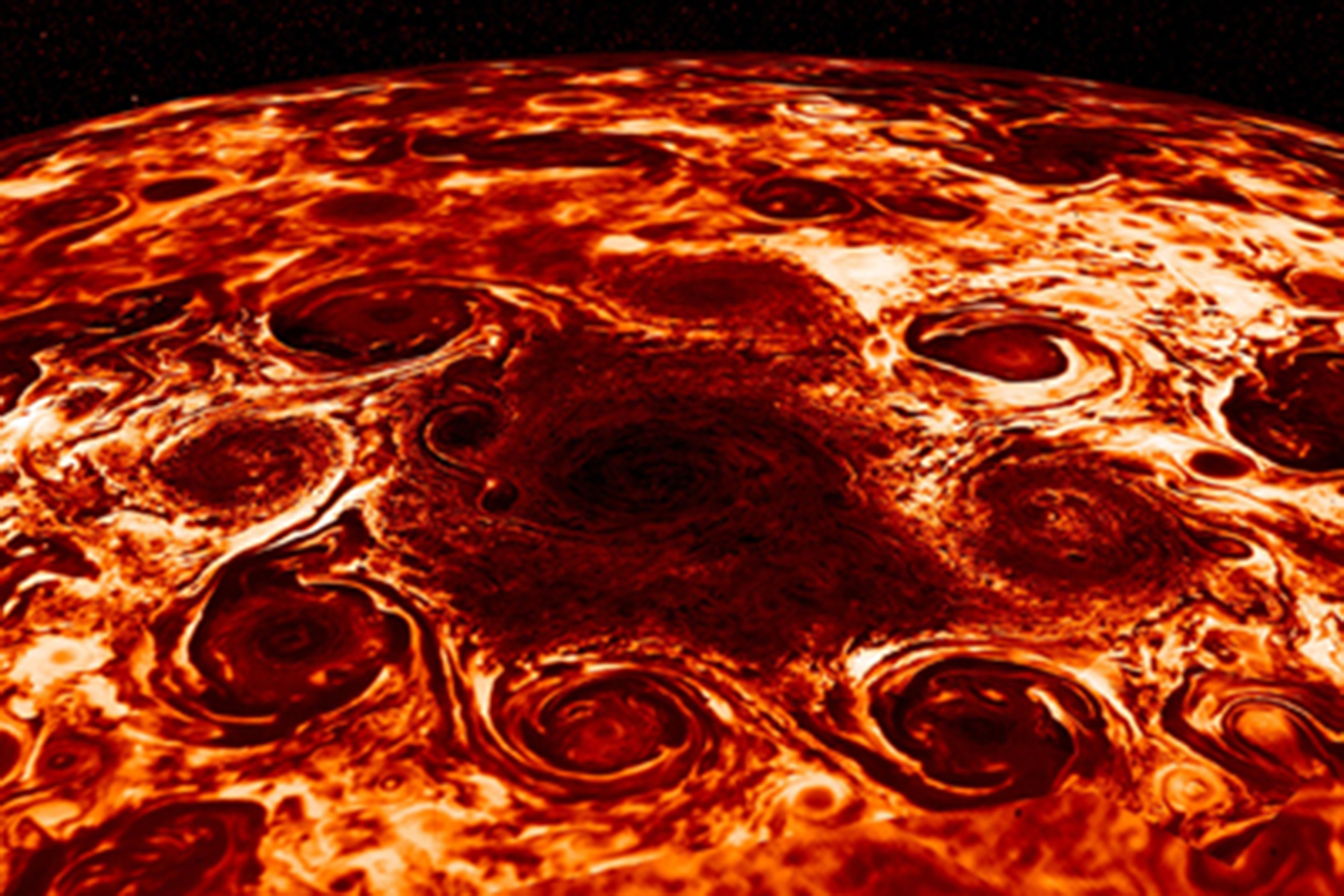Jupiter is a big, complex, chaotic planet. It has long been known as the most dominant feature in our sun’s orbit, but it wasn’t until last May that the planet’s internal features began to be revealed. During a few close passes, NASA’s $1.1 billion Juno spacecraft collected data on the gas giant that revealed cyclones the size of Earth and a surprisingly strong magnetic field.
Now, data collected by Juno have uncovered more never-before-seen features on its north and south poles. In a study published this week in the journal Nature, a team of scientists report bizarre geometric storms surrounding a single massive cyclone on each of the planet’s poles. The storms measure seven thousands miles across and reach wind speeds nearing 220 miles per hour, which would classify them as Category 5 hurricane here on Earth.
On July 4, 2016, Juno rendezvoused with Jupiter to perform a series of close passes that would bring the spacecraft just a couple thousands miles above the gas giant’s top cloud layer. Using its sophisticated instruments, Juno began to peer beneath the planet’s clouds for the first time, snapping photos and measuring Jupiter’s infrared, microwave, ultraviolet, gravity, and magnetic features.
Among the many mysteries Juno scientists sought to uncover were Jupiter’s poles, previously hidden from our telescopes due to the planet’s nonexistent tilt. When Juno finally beamed back images of the north pole, scientists were shocked to find eight cyclones circling a single storm in the middle. Later, the south pole presented a similar arrangement with five outer storms.
Alberto Adriani, a co-investigator for Juno’s Jovian Infrared Auroral Mapper (JIRAM) and lead author of the paper, explained that the storms are likely the result of Jupiter’s heat and rotation speed.
“The high rotation of the planet — about 10 hours for a complete turn around its axis — and the heat coming from the lower levels of the atmosphere certainly have a great impact to the formation of the cyclonic pattern we have observed over the Jupiter’s poles,” he told Digital Trends.
As with many space discoveries, it’s not always clear how or why the findings are relevant to us on Earth. Sure, Jupiter’s strange storms are cool, but why does it matter?
“Space research has a triple value,” Adriani said. There’s the knowledge itself, the search for which “pushes our minds to try to understand what we don’t know.” Then there are the technological advances that enable such a discovery in the first place, some of which can be used to study things like space weather, which have an immediate impact on Earth.
“Last but not least, economically speaking every euro [or dollar] invested in research comes back to the society,” Adriani, and that return on investment is often multiplied by many factors.





